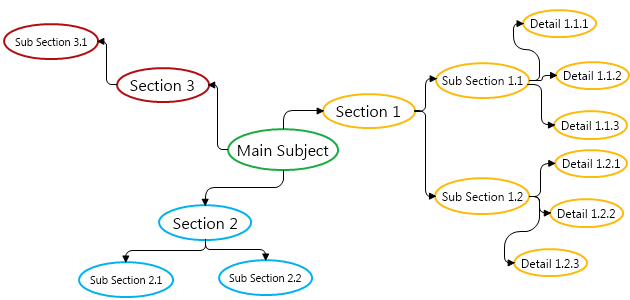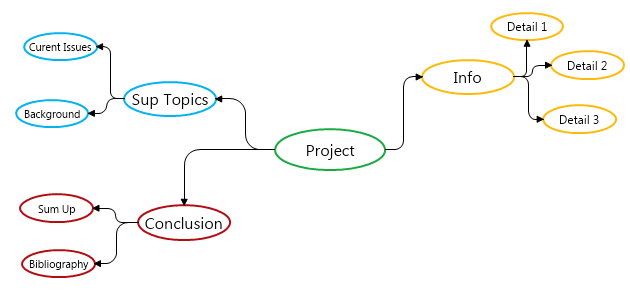A mind map is a diagram for representing tasks, words, concepts, or items linked to and arranged around a central idea. With the use of a non-linear graphical layout, the user can build an intuitive framework around a central concept. Mind mapping converts a long list of monotonous information into a colorful, memorable and highly organized diagram that works in line with the brain's natural way of doing things.
What are mind maps used for?
Mind Maps are used to visually organize information and are one of the diagrams with the longest use record in human history. Mind Maps serve as an organizer for the thinking process, allowing people to freely visualize an idea and all links related to it. Their structure is rather simple: the main idea stands in the center and every aspect of it is linked in no specific order.
Benefits and Uses
Mind mapping avoids dull, linear thinking, jogging your creativity and making note-taking fun again. But what can we use mind maps for?
Note-taking-Brainstorming (individually or in groups)
Problem-solving
Studying and memorization
Planning
Researching and consolidating information from multiple sources
Presenting information
Gaining insight into complex subjects
Jogging your creativity
Understanding mind maps
Mind Maps are the most creative types of diagrams, where absolutely any symbol or shape is acceptable. Many mind maps include emoji, freely written text, drawings, pictures, etc. Moreover, mind maps were initially drawn on hand, and on many occasions they still are.
The Five Essential Characteristics of Mind Mapping:
The main idea, subject or focus is crystallized in a central image.
The main themes radiate from the central image as 'branches'.
The branches comprise a key image or keyword, drawn or printed on its associated line.
Topics of lesser importance are represented as 'twigs' of the relevant branch.
The branches form a connected nodal structure.
Types of mind maps
Mind Maps are widely used across many industries, serving different purposes. Here are some examples of the main types of Mind Maps:
1. Reference Mind Map
The reference mind map is used for keeping track of information quickly and easily.
2. Presentation Mind Map
The presentation mind map is used as an alternative to sliding presentations when the entire information needs to be available at all times.
3. Project Mind Map
The project mind maps are used for creating plans and solving problems.


